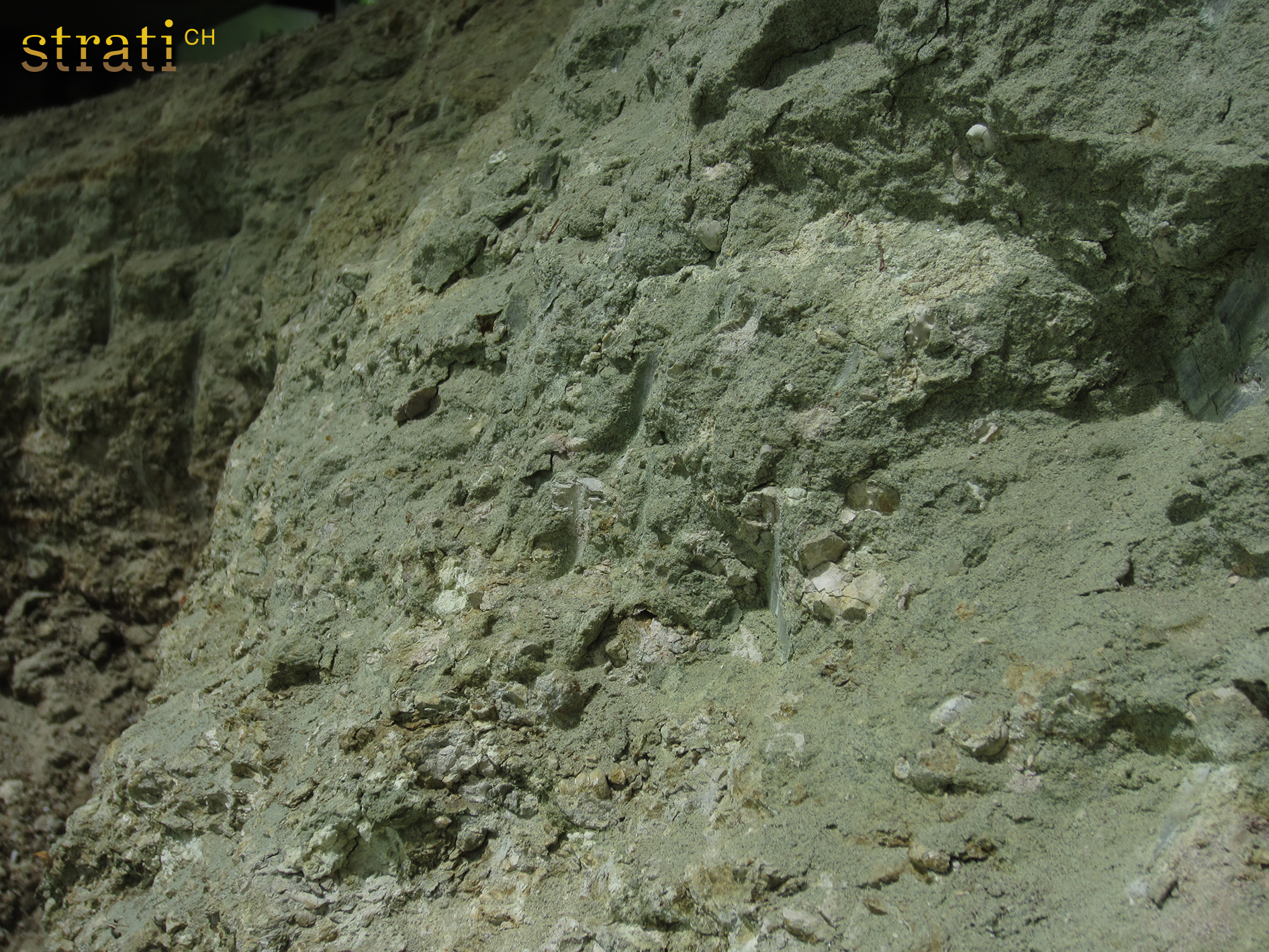Grès des Vernettes
Retour à JuraReprésentation et statut
- Couleur RGB
- R: 245 G: 170 B: 170
- Rang
- Banc lithostratigraphique
- Usage
- Ce terme est en usage.
- Status
- terme informel
Nomenclature
- Deutsch
- Vernettes-Sandstein
- Français
- Grès des Vernettes
- Italiano
- Arenaria delle Vernettes
- English
- Vernettes Sandstone
- Origine du nom
-
Les Vernettes, quartier de Bonvy (France) situé au sud de Bellegarde-sur-Valserinne
- Variantes historiques
-
Vernettes Beds (Pictet et al. 2016)
Description
- Épaisseur
- Max. 2 m dans la région de Bellegarde-sur-Valserine, env. 1,2 m dans la région de Ste-Croix.
Hiérarchie et succession
- Unité hiérarchiquement supérieure
- Unités sus-jacentes
- Unités sous-jacentes
Âge
- Âge au sommet
-
- Albien précoce
- Note sur le sommet
-
Zone à C. floridum + H. puzosiana + O. subhilli
- Âge à la base
-
- Albien précoce
- Note sur la base
-
Zone à L. irregularis + S. kitchini
- Méthode de datation
-
Biostratigraphie des ammonites (Pictet in prep.)
Géographie
- Région-type
- Jura méridional
Paléogéographie et tectonique
-
- Crétacé du Jura
- Termes génériques
-
-
Jura
:
Juragebirge
-
Jura
:
- Type de protolithe
-
- sédimentaire
- Métamorphisme
- non métamorphique
Références
- Définition
-
(2016) :
The Perte-du-Rhône Formation, a new Cretaceous (Aptian-Cenomanian) lithostratigraphic unit in the Jura mountains (France and Switzerland). Swiss J. Geosc. 109/2, 221-240
From the base to the top of the Mussel Mb, five subunits have been identified (Fig. 8).
The third one, the Vernettes Beds (unit S9, Figs. 4, 8g–h), is a 0–10 m thick light green, white or orange, lightly marly sandstone. The microfacies is a glauconite and quartz-rich packstone (Fig. 8h). The Vernettes Beds includes a basal white phosphatic conglomerate, which delivered a rich benthic (echinids, bivalves, gastropods, brachiopods) and an abundant nectonic macrofauna (belemnites, and about 11 ammonites taxa, Fig. 8i, Pictet and Roux 1847–1854, Pictet and Campiche 1858–1871, Renz and Jung 1978). The ammonite fauna from these beds records the Aptian-Albian boundary and presents some unusual taxa. This fauna will be the subject of a future detailed palaeontological study.

